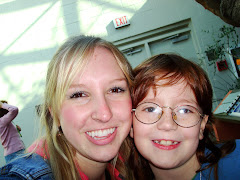Baseball Saved Us
Written by Ken Mochizuki
Illustrated by Dom Lee
1993 Parents Choice Award
Lee & Low Books, 1993 K-3
Picture Book, Historical Fiction
The setting is 1942 in a Japanese American internment camp. The story is told through the eyes of a young boy. He, like many children, did not understand why the Japanese had to sell their possessions and leave thier homes. His father told him it is because the government does not think that Japanese Americans can be trusted because of the war with Japan. The little boy says the camp was hot during the day and cold at night, full of dust storms, no privacy, and no work for children or adults to do. However, the camp worked together to build a baseball field. The men flooded the area with water to pack down the dust and made it hard. Blechers were built and Mothers sewed uniforms. Soon, there were baseball games all the time. The young boy wants so much to be good at baseball, but he usually strikes out and plays second base, because this is where his teammates say is the easiest. When the championship game came, it was up to the young boy to bring his teamates to home plate to win the game. When he glanced at the man in the tower, the guard who was always watching them, he became angry. He hit a home run!!
After the war, he was not treated fairly. No one would eat lunch with him at school or even talk to him. But the other boys saw that he was better in baseball, and they started calling his Shorty but they "smiled when they said it." When it was time for a game, Shorty realized that there was no one else on the team like him. People in the crowd called him "Jap" and he became very nervous. When it was his turn to bat, he thought the pitcher's glare was similiar to the guard's glare at the camp. Shorty hit another home run and was lifted up onto the shoulders of his teammates.
I enjoyed the book being told through the eyes of a child. It helped me realize that children did not have any idea why this was happening to them. I am reminded of how dependent and innocent children are and it breaks my heart that they had to face this sorrow and harsh treatment. The illustrations do a great job of conveying the scenery and feelings of this time. I can not imagine how long the illustrations must have taken, for the illustrations were made by applying encaustic beeswax on paper, then scratching out images, and finally adding oil paint for color. The colors used are mostly all different shades of brown. This conveys the feel of the desert but also the gloominess experienced at the intertnment camps. The Japanese do not smile, they have very serious expressions on their faces. This communicates the sad and anger of the Japanese Americans. Actually, the only page which contains a bright color is when Shorty hits a home run on the school baseball team after the war. When the crowd was chanting him, calling his a "Jap", he hit a home run, showing that he was victorious and overcame their chants and ridicule. The last page also contains a light blue sky when his teamates are jumping and celebrating with him.
Baseball Saved Us is a great way to teach younger students about the effects of WWII. They will be able to understand the way that the Japanese Americans were treated during this time, for the facts from the past become living , breathing drama through the eyes of Shorty. Students will be able to see first hand the great amount of social injustice the Americans treated the Japanese Americans with. By reading this book, they will understand the definition of social injustice.
It is also a great book for boys and girls to read who like sports. Shorty was not satsified with his baseball playing in the beginning, so he praticed and praticed. His practice helped him become a strong and focused baseball player. This teaches that practice really does benefit.
Students can also place themselves in Shorty's poistion as he goes back to school after the war. "How would they feel if no one ate lunch with you or wouldn't even talk to you because you were different from your classmates?" Students need to understand what this may have felt like and make sure that they are not treating anyone this way-injustly. Students can realize that we all experience loss, love, friendship...even though our outward appearance may be different. Students can be asked, "How can you relate to Shorty? What do you have in common?"
Students are taken back to the time of WWII and placed in the an intertment camp through Baseball Saved Us. They are able to develp a sense of historical understanding, and perceive past events and issues as they were experienced by the people at the time.
